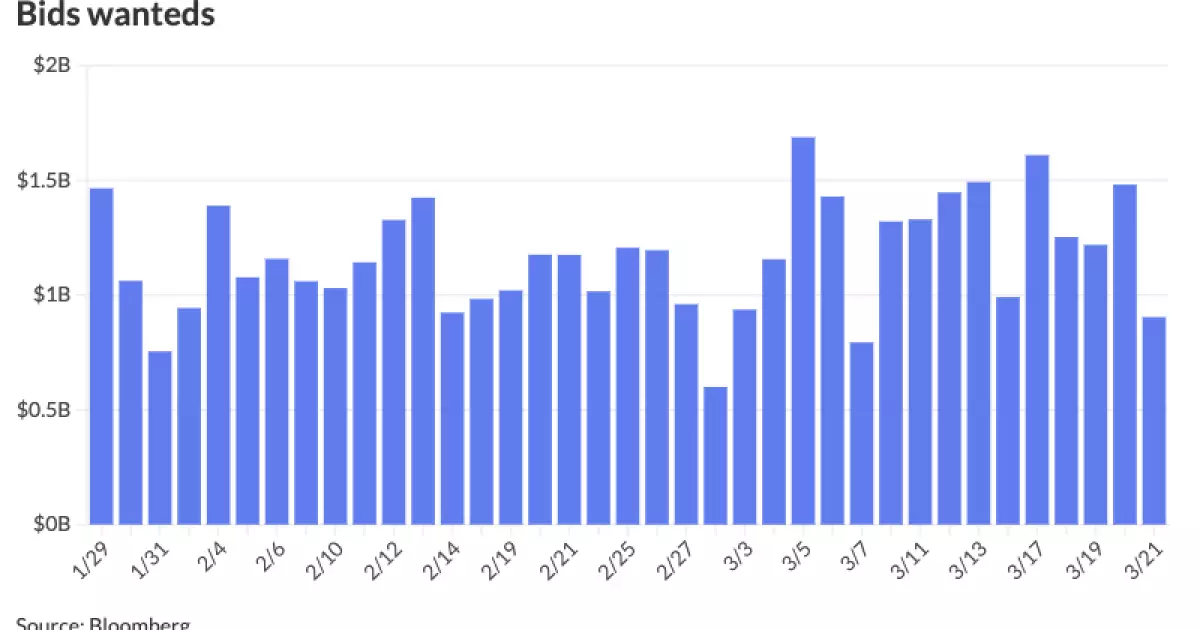In an unpredictable economy marked by escalating U.S. Treasury yields, the municipal bond market finds itself grappling with heightened volatility. Municipal bonds, typically viewed as stable investments due to their tax-exempt status, are facing a formidable challenge today. Recent trends have indicated fluctuations in value, driven by burgeoning new issuances and the swirling uncertainty around U.S. Treasury yields. The unpleasant truth is that municipal investors are becoming increasingly cautious, hesitant to stake their capital when the economic foundation feels shaky beneath their feet.
Long-term municipal notes have observed consistent appeal amidst the general turbulence. However, they’re not immune to the overarching economic climate, evidenced by rising yields across curves. The issue threatens to unveil a central fracture in the market: the once-reliable relationship between the yields of municipal bonds and U.S. Treasuries is beginning to fray. As Treasury yields rise, municipalities struggle to maintain their attractiveness, particularly for risk-averse investors who are fleeing to the perceived safety of government bonds.
Investor Sentiment: The Prolonged Tax Season Blues
The ongoing struggle for municipal bonds is compounded by unsettling investor sentiment. Recently, outflows from muni mutual funds have reached a staggering $216.4 million as investors pull back due to higher yields, not to mention the traditional selling that accompanies tax season. One cannot ignore the irony in this; while U.S. Treasuries command more attention, municipalities are left wrestling with their identity. This sell-off signifies a critical juncture in how investors perceive risk versus reward within this asset class.
Investors’ wariness might stem from a more skeptical view of government efficiencies and fiscal responsibility, particularly as municipalities across the country face pressures to fund various public services amidst rising costs. With higher yields, many labels revenue bonds as “too risky,” driving a wedge between the stability municipal bonds once offered and the need for local governments to finance essential projects. The path toward stabilizing sentiment appears convoluted at best.
The Effect of New Issuances
A key component in the ongoing negotiations for municipal bond stability revolves around new bond issuances. With an estimated supply of $7.9 billion this week, one might hope for a silver lining. Yet, the market dynamics are decidedly more complicated. The robust issuance of municipal bonds can intensify competition, leading to further price declines. If municipalities cannot make their offerings attractive through favorable yields, the risk of additional capital flight becomes an ever-looming specter.
Yet, this barrage of new issuances still holds the potential of stimulating market interest in the coming weeks. The allure of “green bonds” and socially responsible investments could very well carve a niche for municipalities willing to embrace innovative funding strategies. The success of these ventures will ultimately depend on how well they can communicate value to investors who are increasingly sophisticated and discerning in their choices.
Valuations: The Double-Edged Sword
Despite the precarious structured outlook, some investors remain intrigued by perceived attractive valuations within municipal bonds. While the sentiment surrounding this class is currently skeptical, assets along the longer end of the curve are witnessing renewed interest. Certain investors appear unfazed by volatility, recognizing how the tightening of long-term spreads presents a prime opportunity. Yet these valuations come with warnings. The lackluster flow environment reveals an unsettling reality in which potential gains could easily evaporate amidst unpredicted interest rate movements.
Investor appetites may stabilize if municipalities can effectively communicate their broader economic strategies and address fiscal concerns. However, without curbing the rampant volatility currently depicted in the broader market, the potential for losses continues to loom large. The challenge lies in balancing attractive valuations against rising uncertainties.
Future Outlook: Hope or Hurdle?
Municipal bonds remain deeply embedded within the broader financial landscape but face a daunting path moving forward. The rise in UST yields has transformed a once reliable asset class into a battleground, where investor sentiment sways with the wind of economic tidings. This tumultuous backdrop requires an earnest reconsideration of how municipalities can elevate their financial narratives to engender confidence and investment.
Potential strategies could emerge from this upheaval, but they necessitate a departure from traditional funding mechanisms and an embrace of innovative solutions. Municipalities need to focus on fiscal transparency and accountability if they wish to reclaim lost confidence. The enduring question remains: will investors heed these calls, or will municipal bonds forever linger in the shadow of deteriorating public trust and fiscal uncertainty?
The future for municipal bonds seems a delicate balance of opportunity and risk, and how stakeholders respond to the current challenges will dictate whether these bonds will once again become the keystones of prudent investing or remain relegated to uncertainty.


Leave a Reply